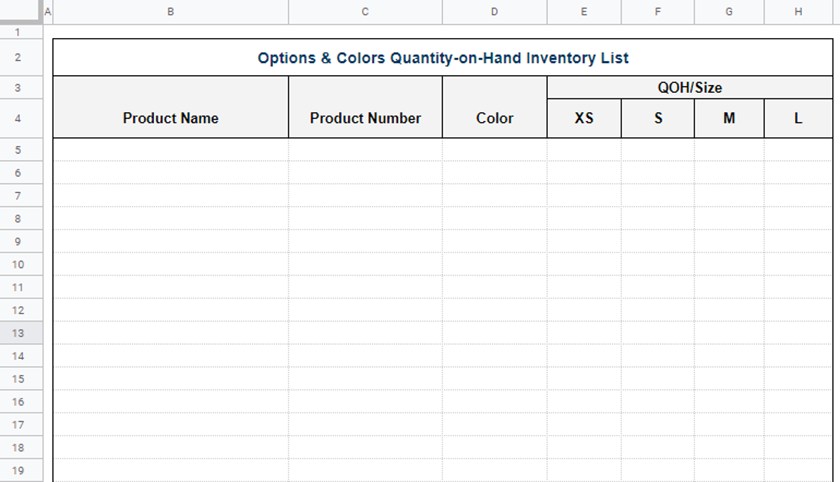
These calculations will come in handy if you use formulas in your spreadsheet. Quantity info can also help you track the value of the inventory you’re currently carrying, which makes budgeting easier. You can’t track inventory levels without including how much of each product you have on hand. If you sell perishable items, include the expiration date in this section. Think about it this way: If you’re running out of a black shirt in large, you don’t want to mistakenly reorder an extra-large white shirt. This additional information is helpful if you sell a product in many colors and/or sizes. Product detailsĪdd the name of each item you carry and include product characteristics so you can easily identify which version you’re talking about.
#INVENTORY MANAGEMENT FOR SMALL BUSINESS TSHIRTS HOW TO#
Here’s a closer look at how to make an inventory spreadsheet - and what you should include to ace inventory management. However, the overarching concept remains the same. Inventory spreadsheets also help business managers keep inventory organized and spot any anomalies - such as if you’re supposed to have a product in stock, but it isn’t in your warehouse.īig businesses with hundreds or thousands of SKUs will have complex inventory spreadsheets, while small and medium-sized companies will have simpler inventory spreadsheets. An inventory spreadsheet can help you pinpoint where you can improve - so you’re not wasting money on inventory consumers don’t want or missing sales as a result of out-of-stock products. It’s a useful tool to gauge your existing merchandising efforts and determine how customers are engaging with your business.


Similar to a budget spreadsheet, an inventory spreadsheet tracks the products that go out and what you need to bring back in to replenish your stock. What’s the best way to do that? An inventory spreadsheet. Whether your business is big or small - or you’re selling in-store, online, or both - if you have inventory, you need to track it.


 0 kommentar(er)
0 kommentar(er)
